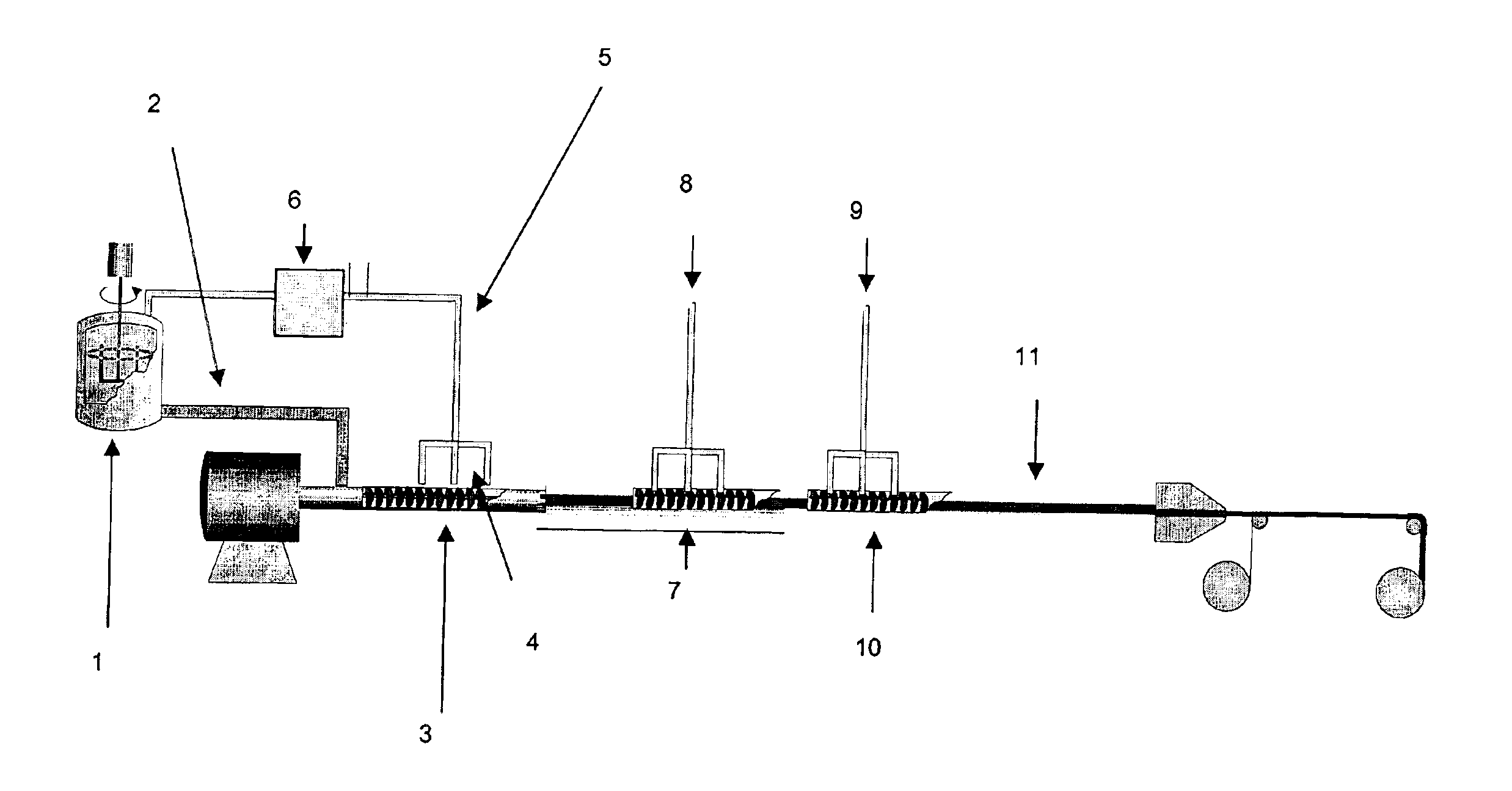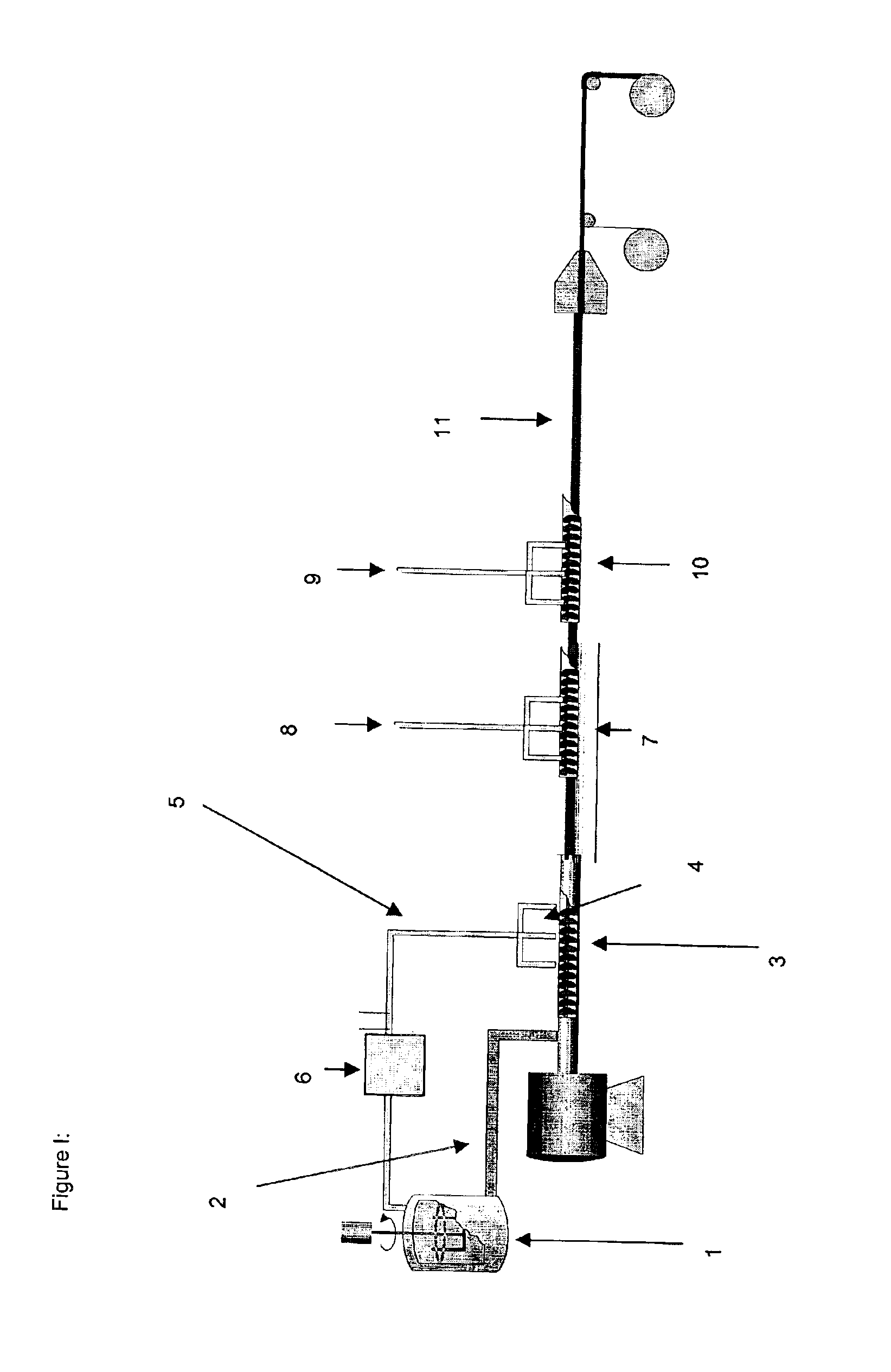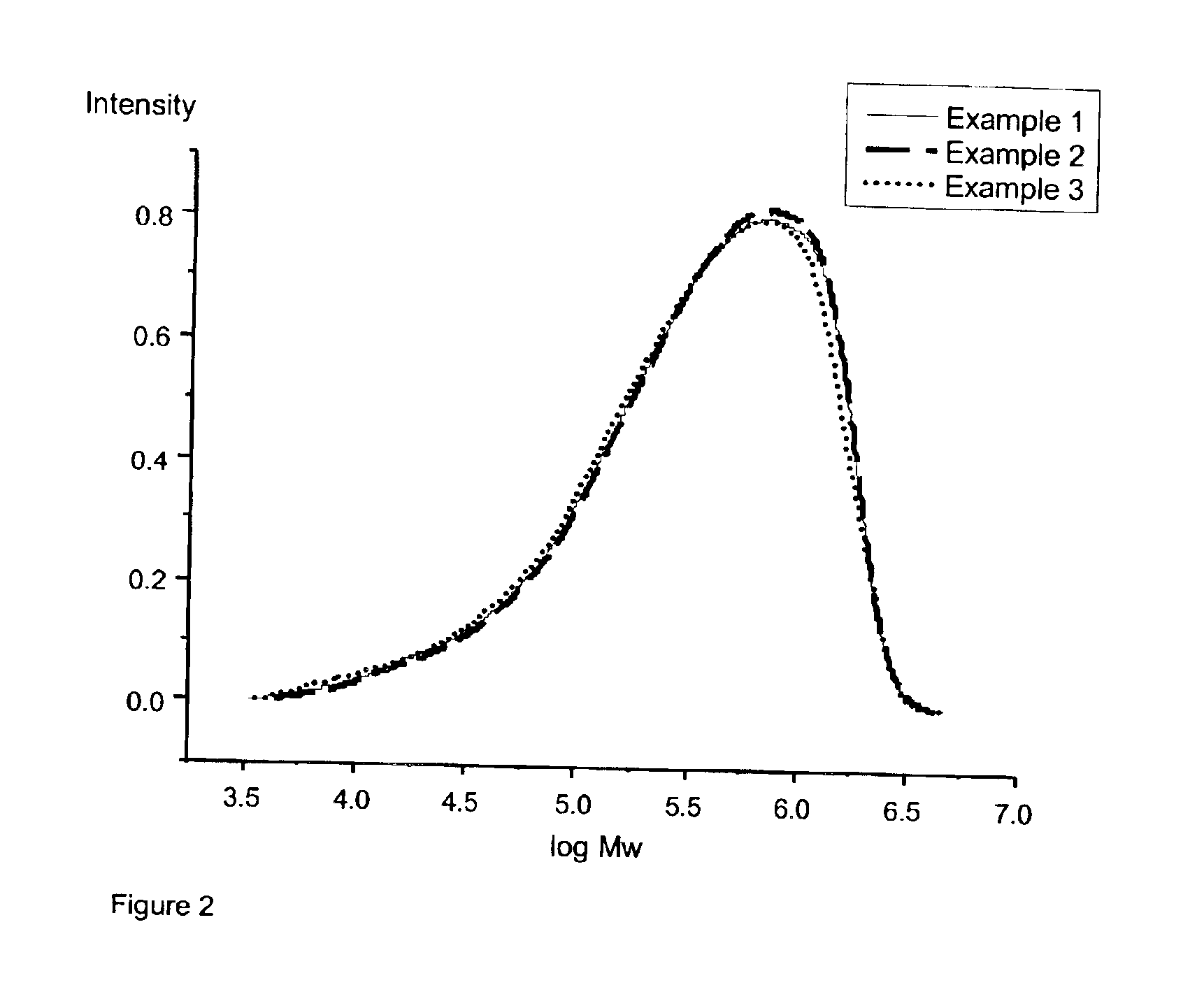Continuous two-stage preparation of solvent-free polyacrylate hotmelt PSAs
- Summary
- Abstract
- Description
- Claims
- Application Information
AI Technical Summary
Benefits of technology
Problems solved by technology
Method used
Image
Examples
example 1
[0066]A reactor conventional for radical polymerizations was charged with 80 kg of acrylic acid, 720 kg of 2-ethylhexyl acrylate, and 600 kg of acetone / isopropanol (97:3). After nitrogen gas had been passed through the reactor for 45 minutes with stirring, the reactor was heated to 58° C. and 400 g of Vazo 67™ (2,2′-azobis (2-methylbutyronitrile from DuPont) were added. The external heating bath was then heated to 75° C. and the reaction was carried out constantly at this external temperature. After a reaction time of one hour a further 400 g of Vazo 67™ (DuPont) were added. The reaction was terminated after a time of 48 hours and the reaction mixture was cooled to room temperature. It was analyzed by test method B. The adhesive was then freed from the solvent in a concentrating extruder (W&P ZSK 58, L=40 D). The extruder had a backward devolatilizer system and 3 further reduced-pressure stages. The reduced-pressure of the backward devolatilizer was 300 mbar, reduced-pressure stage ...
example 2
[0069]The adhesive from Example 1 was freed from the solvent in a counter-rotating twin-screw extruder from the company Welding Engineers. The extruder had a barrel length of 48 D with a screw diameter of approximately D=51 mm. The extruder possessed over 3 reduced-pressure stages, which were operated at about 100 mbar. The entry temperature of the polymer solution was 30° C. The speed was set at 103 revolutions per minute, so that the extruder was operated with a specific drive energy of 0.11 kWh / kg. The throughput was 40 kg / h feed solution. The exit temperature was 117° C. The recovery rate was 91%. The solvent was collected from the first two reduced-pressure domes, condensed and recycled. The acrylate hotmelt was analyzed by test methods A and B. The residual solvent fraction in the hotmelt PSA was 0.09%.
[0070]The acrylate hotmelt was subsequently passed to a slot die and then coated at 50 g / m2 onto a Saran-primed PET film. Following irradiation with an EB dose of 40 kGy, test m...
example 3
[0071]The polymer from Example 1 was coated from solution onto a Saran-primed PET film, using a conventional doctor blade, and was dried at 120° C. for 10 minutes. The application rate was 50 g / m2. Following irradiation with an EB dose of 40 kGy, test method C was carried out.
[0072]FIG. 2 shows that the differences in the molecular weight distributions are very slight and therefore that the concentration process is very gentle to the polymer. Accordingly, both high-volume concentrating extruders produce very little shearing and so prevent molecular weight degradation of the polymer.
[0073]To assess the efficiency of the concentration process, the residual solvent fraction was measured after concentration. The measurements are shown in Table 1:
[0074]
TABLE 1Test AExampleWeight loss [%]10.320.2
Generally, the fraction of volatile components for the acrylate hotmelts investigated is less than 0.5%.
[0075]For further examination, the specimens were used for coating again and then irradiated...
PUM
| Property | Measurement | Unit |
|---|---|---|
| Temperature | aaaaa | aaaaa |
| Temperature | aaaaa | aaaaa |
| Temperature | aaaaa | aaaaa |
Abstract
Description
Claims
Application Information
 Login to View More
Login to View More - R&D
- Intellectual Property
- Life Sciences
- Materials
- Tech Scout
- Unparalleled Data Quality
- Higher Quality Content
- 60% Fewer Hallucinations
Browse by: Latest US Patents, China's latest patents, Technical Efficacy Thesaurus, Application Domain, Technology Topic, Popular Technical Reports.
© 2025 PatSnap. All rights reserved.Legal|Privacy policy|Modern Slavery Act Transparency Statement|Sitemap|About US| Contact US: help@patsnap.com



